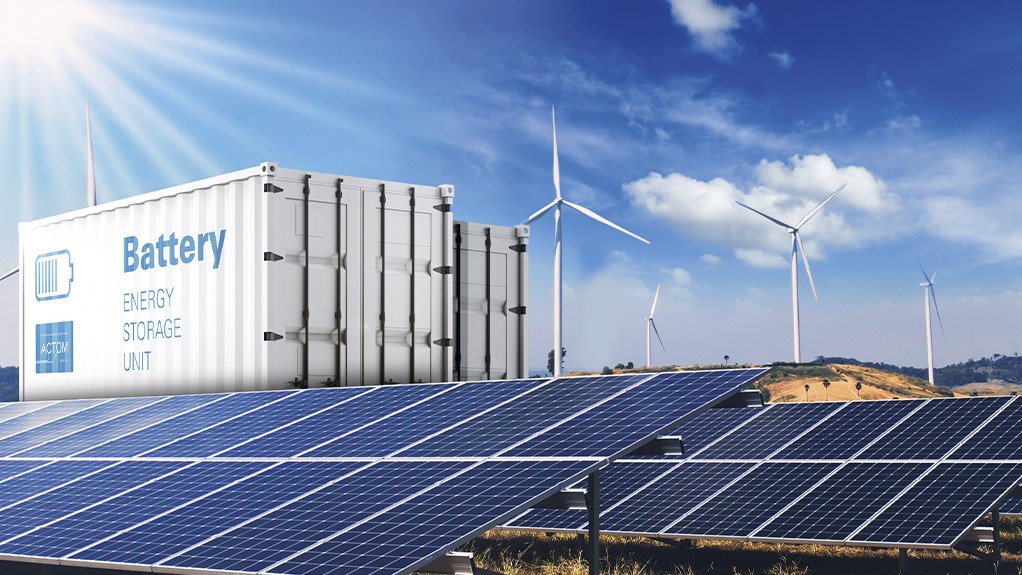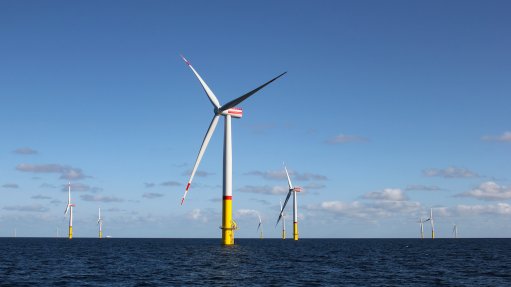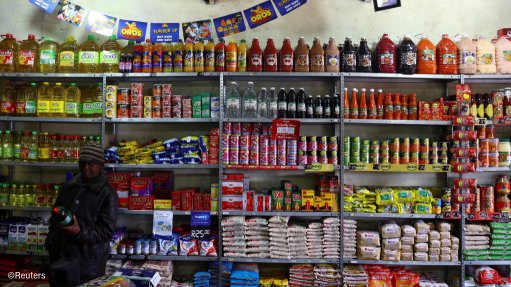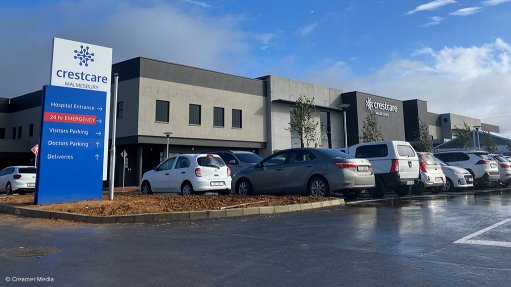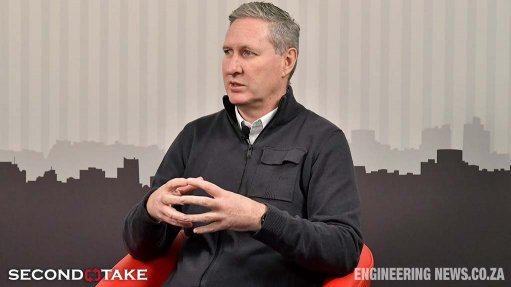Energising South Africa – why energy storage solutions are crucial to the country’s energy transition
This article has been supplied by the author and has not been written or solicited by Creamer Media. It may be available only for a limited time on this website.
By Richard von Moltke, General Manager at Static Power, a division of ACTOM
With South Africa facing a critical juncture in its energy transition – needing to meet rising demand while reducing emissions – energy storage is key, promising stable grids and integrating renewables. However, when discussing South Africa’s energy transition and the role of energy storage, it is crucial to differentiate between two distinct segments – in-front-of-the-meter systems and behind-the-meter systems. These segments have different timelines, approaches and resource pools, but both are equally important for the country’s transition.
Behind-the-meter (BTM) systems are typically smaller and usually fall into the private sector space such as residential, commercial, and industrial systems. These systems are quicker and easier (although still complex) to install and could have a faster impact on South Africa’s transition. This impact of distributed systems has already been seen over the past three years with the proliferation of solar PV installations, mainly by small businesses and residential users.
In-front-of-the-meter (FTM) systems are bigger utility-scale projects that will be driven by Eskom or other power utilities or independent power producers (IPPs) and Eskom. These are typically long-term projects and solutions that could take four to six years or more to complete.
While both are crucial to South Africa’s energy transition, behind-the-meter solutions provide immediate relief to the country’s energy constraints. In-front-of-the-meter projects are key to meeting actual energy transition targets and reducing emissions. These are typically large sustainable projects that will enhance the larger grid infrastructure utilization and ultimately assist to reduce the reliance on coal power stations.
Energy goals
Energy storage is considered crucial for South Africa’s energy goals, particularly in ensuring stable grids and integrating renewables. This is because while the country has great renewable energy sources, the problem is its load profile that does not align with the renewable energy generation profile.
Hence, we need energy storage solutions to store energy during peak generation time, when there is lower demand. Excess energy produced during peak generation periods should be stored in energy storage systems and dispatched during high-demand periods which will ensure a more efficient energy network.
Yet, this is where we have a problem in South Africa because in areas of the highest solar irradiance, where solar PV projects are most economical, we have grid capacity constraints and a lack of energy storage solutions. Currently, projects are underway to implement large battery energy storage systems in strategic locations so that excess energy is not lost, but these projects take time.
To have a sustainable electricity network, energy storage is a crucial part of the system. While technology is likely to evolve and change in the future, there must be some sort of storage system as part of the long-term solution for the country’s energy transition.
Unfortunately, various factors have contributed to the slow adoption of energy storage in South Africa. With the rapid advancement of technology over the past few years, it has been difficult for investors to align with and invest in a specific technology and solution for local production without knowing whether it will still be viable in a few years. The lack of a sufficient regulatory framework also added uncertainties to the industry.
It’s not just about load shedding
Load shedding has forced the country to transition very quickly to accepting energy storage solutions in behind-the-meter applications. However, it has been a far harder sell when it comes to commercial and industrial consumers because, depending on the type of load and the number of hours of backup they need, the return on investment can be between five and eight years with solar PV included.
Encouragingly, people are starting to better understand all the benefits of energy storage. Along with the maturity of solutions and the energy environment, various measures can be implemented to accelerate energy storage adoption in South Africa. For example, a significant driver is the tax relief provided through Section 12B of the Income Tax Act, which offers favourable tax incentives to consumers that invest in renewable energy, specifically for systems coupled to solar PV installations. It will be beneficial if this relief is extended past the date of 28 February 2025 and expanded to include battery energy storage systems with or without being coupled to solar PV systems.
Additionally, proper financial structures and frameworks should be developed by all utilities for selling excess energy back into the grid. From a residential, commercial, and industrial point of view, this would also make the adoption of energy storage solutions a lot easier. Finally, energy wheeling and trading through municipal infrastructure, some of which already have proper fee structures and frameworks in place, could be implemented.
Other than merely side-stepping load shedding, there are many other benefits to energy storage solutions, which people should understand and use to make informed decisions. Users should get an experienced partner that is qualified to provide them with the best advice and technical solutions for their specific needs.
Comments
Announcements
What's On
Subscribe to improve your user experience...
Option 1 (equivalent of R125 a month):
Receive a weekly copy of Creamer Media's Engineering News & Mining Weekly magazine
(print copy for those in South Africa and e-magazine for those outside of South Africa)
Receive daily email newsletters
Access to full search results
Access archive of magazine back copies
Access to Projects in Progress
Access to ONE Research Report of your choice in PDF format
Option 2 (equivalent of R375 a month):
All benefits from Option 1
PLUS
Access to Creamer Media's Research Channel Africa for ALL Research Reports, in PDF format, on various industrial and mining sectors
including Electricity; Water; Energy Transition; Hydrogen; Roads, Rail and Ports; Coal; Gold; Platinum; Battery Metals; etc.
Already a subscriber?
Forgotten your password?
Receive weekly copy of Creamer Media's Engineering News & Mining Weekly magazine (print copy for those in South Africa and e-magazine for those outside of South Africa)
➕
Recieve daily email newsletters
➕
Access to full search results
➕
Access archive of magazine back copies
➕
Access to Projects in Progress
➕
Access to ONE Research Report of your choice in PDF format
RESEARCH CHANNEL AFRICA
R4500 (equivalent of R375 a month)
SUBSCRIBEAll benefits from Option 1
➕
Access to Creamer Media's Research Channel Africa for ALL Research Reports on various industrial and mining sectors, in PDF format, including on:
Electricity
➕
Water
➕
Energy Transition
➕
Hydrogen
➕
Roads, Rail and Ports
➕
Coal
➕
Gold
➕
Platinum
➕
Battery Metals
➕
etc.
Receive all benefits from Option 1 or Option 2 delivered to numerous people at your company
➕
Multiple User names and Passwords for simultaneous log-ins
➕
Intranet integration access to all in your organisation



